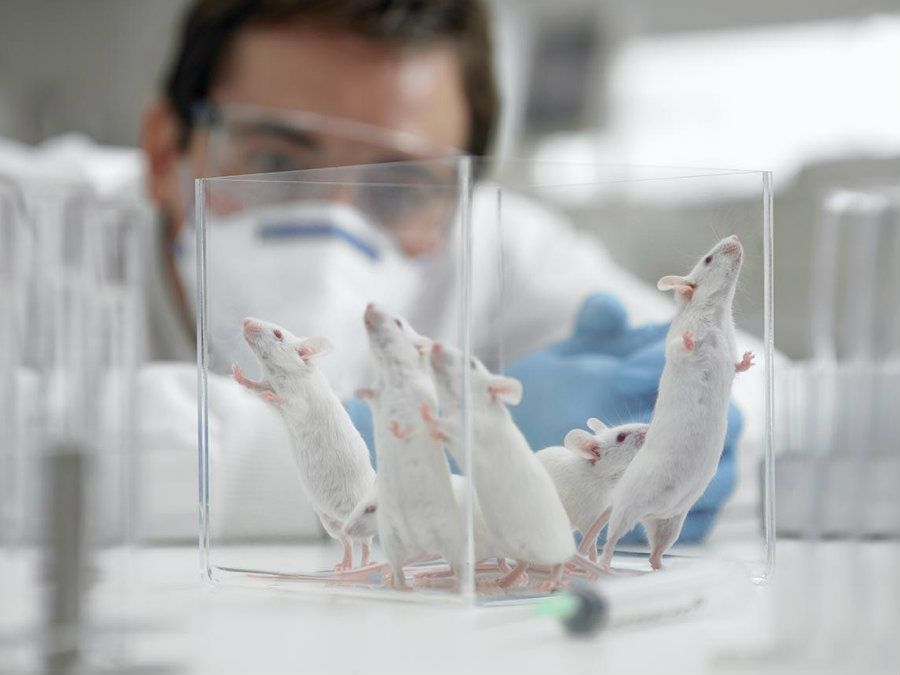Scientists from Yale University managed to trigger the predatory killer instinct in mice by stimulating their neurons using lasers, a behavior that many associate with the primal aggressive intent of famous zombies.
The technique is known as optogenetics, where light-sensitive proteins are inserted into the brain of the subject and then monitored and controlled by using specific light signals and frequencies. By stimulating the amygdala using both lasers and chemicals, researchers were able to trigger predatory-like attacks on insects and artificial prey.

“When we stimulate neurons it is as if there is a prey in front of the animal. They assume the body posture and actions usually associated with real hunting,” commented to NPR Ivan de Araujo, who participated in the study.
Mind control in mice: Attack!
The researchers suggest that predatory skills are what allowed jawed vertebrates to achieve evolutionary success, but they recognize that the neurological elements that permit such behavior are yet to be fully understood. To try and find the root of said instinct, the research team tested several functions of the amygdala, as it appears to have a vital role in what scientists recognize as predatory instinct.
The amygdalae are two almond-shaped structures located in the temporal lobes of the brain of many vertebrates, including mice and humans. It is known to influence memory, emotional reactions, and how we take decisions. The right and left amygdalae have different functions: the right amygdala is known to trigger negative emotions such as fear and sadness, while the left amygdala could cause both happiness and also unpleasant feelings, suggesting that they may have a role in how the brain regulates its reward system, which is vital for evolutionary success.

Thanks to previous studies, researchers were aware that jawed predators are at the top of the food chain, which goes to prove that the anatomical transformation of the jaw had to evolve alongside the neural network that somehow triggers the predatory instinct of the animal.
As a foundation, researchers hypothesized that the central nucleus of the amygdala was fundamental for performing predatory hunting, and they believed that hunting down prey can trigger a larger number of neurons as the food intake process takes place.
Activating the killer instinct of mice
The mice were injected with a light-sensitive construct at the central nucleus of the amygdala. Then, they tried to activate the neurons in the central amygdala that could control the cervical-mandibular muscles. By stimulating the amygdala using lasers, researchers determined that there was a minuscule delay between the signal and the activation of jaw muscles. After stimulation, whenever there was an object within the cage of the subject, the mice would assume an aggressive body posture and proceed to attack the object, holding it down and biting it with its teeth.
Then, the stimulation stopped, and the mice’s behavior stopped immediately. The same experiment was performed by using crickets, and the mice immediately ate the captured insects.

By using optogenetic stimulation of the amygdala, scientists could incite the mice to pursue, restraint, and bite artificial prey, regardless of the mice’s internal state of mind. Researchers noted that the aggressive behavior was not perceived at any time when the lasers were off. They also disabled specific sets of neurons, which led the mice to pursue and not to kill, decreasing the force of the bite by at least 50 percent in some cases.
It was also noted that the mice did not differ from edible and non-edible objects whenever they were stimulated using lasers, but they were able to stop just as the laser stimuli ceased to be present.
A must for evolutionary success
Whenever the mice entered predator mode, their masseter muscles displayed a significantly higher degree of activity, which may help prove the hypothesis of evolutionary success being due to the network that exists between the amygdala and the mandible of vertebrate predators.
Researchers concluded that the central amygdala acts as a modular command system for predatory hunting, as previous research efforts suggested it. The amygdala has a significant influence over the jaw muscles, allowing for deadly biting attacks on prey, while also activating limb muscles, perhaps to seize the prey while it is eaten.
The central amygdala also appears to be a primary component of what forces an animal to initiate prey pursuit, which includes stalking, running towards prey, and fight or freeze behaviors. They also noted that, up to this point, the central amygdala of rodents was mainly linked to threat detection rather than to predatory conduct. Curiously, the team failed to observe any occurrence of freezing in place after the amygdala was stimulated.
In the discussion of the report, researchers suggest that jawless and jawed vertebrates differ in how their craniofacial features are formed, implying that the emergence of a neck seems to be inherent to jawed vertebrates, mainly to accommodate the muscles that allow for a predatory instinct.
Source: Cell
